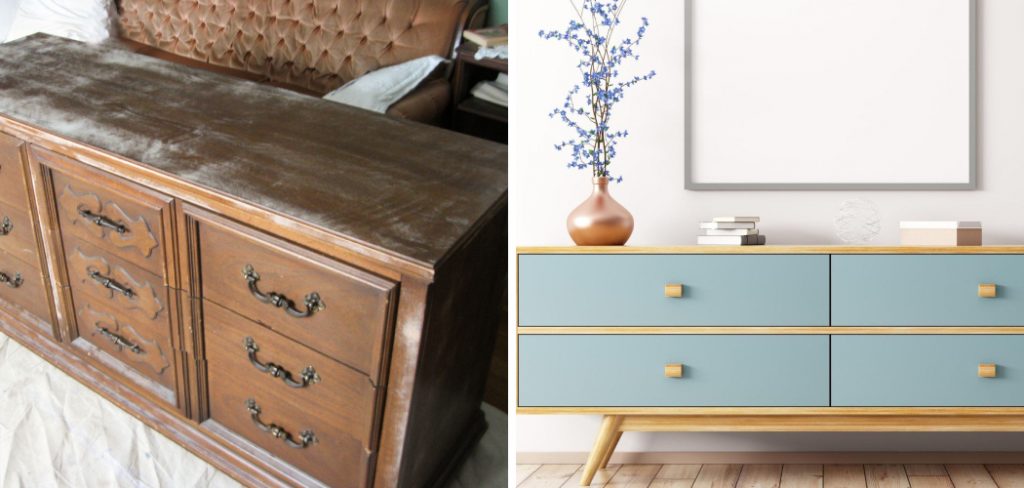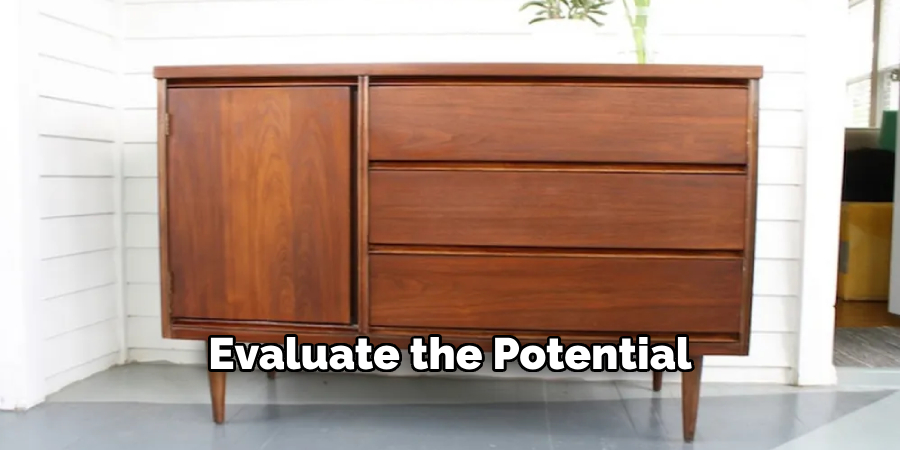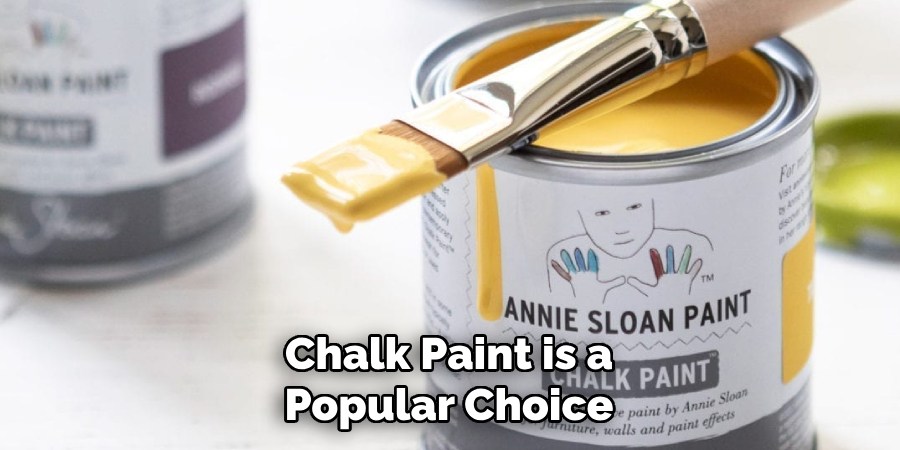Do you have old furniture that’s seen better days? Maybe it’s a vintage dresser from your grandmother or a thrift store find that just needs a little love. With the right touch, you can breathe new life into these pieces and make them stylish additions to your home. This blog post will guide you through the exciting process of how to modernise old furniture.

From selecting the best pieces for a makeover to choosing color palettes and updating hardware, you’ll learn everything you need to know to turn your old furniture into modern treasures.
Why Modernize Old Furniture?
Cost-Effective Home Improvement
Renovating furniture is often more affordable than buying new items. Instead of spending hundreds or thousands on new pieces, you can invest time and creativity into transforming what you already have. This approach not only saves money but also adds a unique, personalized touch to your home decor.
Environmental Benefits
Repurposing old furniture is an eco-friendly choice. By giving new life to existing pieces, you reduce waste and the demand for new materials. This helps lower your carbon footprint and contributes to a more sustainable lifestyle.
Sentimental Value
Modernizing old furniture allows you to preserve sentimental items. Whether it’s a family heirloom or a piece with fond memories attached, updating its look lets you keep the item in your home while ensuring it fits with your current style.
Assessing Your Furniture
Determine Structural Integrity
Before you start modernizing, assess the structural integrity of your furniture. Check for damages like cracks, loose joints, or missing parts. Ensure the piece is sturdy enough to withstand the renovation process and future use.
Identify the Material
Understanding the material of your furniture is crucial. Different materials require different techniques and products for modernization. For example, wood can be sanded and stained, while metal might need rust removal and special paint.
Evaluate the Potential
Consider the potential of each piece. Some furniture items have timeless designs that can easily be updated with a fresh coat of paint or new hardware. Others might need more extensive work. Prioritize pieces that will provide the most impact with the least effort.

Choosing Your Style
Contemporary Chic
For a sleek, modern look, opt for a contemporary chic style. This involves clean lines, neutral colors, and minimalistic design elements. Think black, white, and gray tones with metallic accents.
Rustic Modern
Combine rustic charm with modern aesthetics by going for a rustic modern style. Use natural wood finishes, distressed paint techniques, and earthy colors. This style works well for pieces like farm tables, dressers, and bookshelves.
Mid-Century Modern
Mid-century modern is characterized by simple forms, organic influences, and a mix of traditional and non-traditional materials. Choose bold colors, geometric patterns, and sleek legs for furniture like coffee tables and armchairs.
Preparing Your Furniture for How to Modernise Old Furniture
Cleaning and Sanding
Start by thoroughly cleaning your furniture to remove dirt, grime, and old polish. Next, sand the surface to create a smooth base for painting or staining. Use fine-grit sandpaper to avoid damaging the material.
Fixing Damages
Repair any damages you identified earlier. Use wood filler for small cracks and chips, and wood glue for loose joints. For metal furniture, remove rust with a wire brush and apply a rust converter if necessary.
Priming the Surface
Applying a primer is essential for ensuring your paint or stain adheres well to the surface. Choose a primer that’s compatible with your material—wood, metal, or plastic—and apply a thin, even coat.
Painting Techniques
Chalk Paint
Chalk paint is a popular choice for modernizing old furniture. It provides a matte finish and requires minimal prep work. Apply two to three coats, allowing each to dry before adding the next. Finish with a wax sealer for durability.

Spray Painting
Spray painting offers a smooth, even finish and is ideal for pieces with intricate details. Use multiple thin coats to avoid drips and achieve full coverage. Opt for spray paint designed for furniture for the best results.
Staining and Sealing
For a natural look, consider staining your wood furniture. Choose a stain color that complements your decor, and apply it with a clean cloth in the direction of the grain. Once dry, seal the surface with a clear topcoat to protect the finish.
Updating Hardware
Choosing New Hardware
Replacing old hardware with modern options can instantly update your furniture’s look. Choose handles and knobs that match your chosen style—sleek metal for contemporary chic, or antique brass for rustic modern.
Installing Hardware
Measure and mark where the hardware will go before drilling holes. Use a template to ensure even placement. Once the holes are drilled, attach the new hardware securely, ensuring it functions smoothly.
DIY Hardware Options
Get creative by making your own hardware. Use leather straps as drawer pulls, or repurpose vintage buttons and knobs. This adds a unique, personalized touch to your furniture.
Upholstering and Fabric Choices
Selecting Fabric
Choose fabric that complements your modernized furniture and overall decor. For a contemporary look, go for solid colors or subtle patterns. For a rustic or mid-century modern style, consider bold prints and textures.
Reupholstering Basics
Remove the old fabric and padding, taking care to keep the pieces intact for use as templates. Cut the new fabric to size, and attach it using a staple gun. Add new padding if necessary for improved comfort.
Adding Cushions and Throws
Enhance the look and comfort of your modernized furniture with new cushions and throws. Choose colors and patterns that coordinate with your updated piece and add layers of texture to your space.
Decoupage and Decorative Finishes
Decoupage Techniques
Decoupage involves gluing paper or fabric onto the surface of your furniture and sealing it with a topcoat. Choose images or patterns that complement your style. Apply a decoupage medium and smooth the paper onto the surface, then seal with several layers of clear varnish.
Using Stencils
Stencils can add intricate designs to your furniture without the need for artistic skills. Secure the stencil in place and apply paint with a sponge or stencil brush. Carefully remove the stencil and allow the paint to dry.
Decorative Inlays
For a high-end look, consider adding decorative inlays. Use materials like mother-of-pearl, metal, or contrasting wood to create patterns or designs. Inlays require precision and patience but can transform a piece into a statement item.

Lighting and Placement
Highlighting Updated Pieces
Proper lighting can enhance the appearance of your modernized furniture. Use spotlights or accent lamps to draw attention to your updated pieces. Natural light can also highlight the colors and textures you’ve created.
Strategic Placement
Consider the placement of your furniture within your space. Position updated pieces where they can be seen and appreciated. Avoid overcrowding to ensure each item gets the attention it deserves.
Creating Focal Points
Use your modernized furniture as focal points in your rooms. Arrange other decor items around them to create balance and harmony. This will make your updated pieces stand out and become conversation starters.
Maintaining Your Modernized Furniture
Regular Cleaning
Keep your furniture looking fresh by regularly dusting and cleaning it. Use appropriate cleaning products for the material to avoid damage. For painted surfaces, a damp cloth usually suffices, while wood may need specialized cleaners.
Touch-Up Tips
Over time, your furniture may need touch-ups to maintain its appearance. Keep some of the paint or stain used for the original update for quick repairs. Small scratches and chips can often be fixed with a bit of paint or filler.
Seasonal Care
Different seasons can affect your furniture, especially wood pieces. In dry months, use a humidifier to prevent cracking. During humid periods, ensure good ventilation to avoid swelling and warping.
Things to Consider When Modernizing Furniture
Budgeting for Updates
Before embarking on your furniture modernization journey, it’s essential to establish a budget. Consider costs for materials, tools, and any professional assistance you may require. Setting a clear financial plan helps ensure that you can complete the project without overspending.
Assessing Structural Integrity
Prior to making aesthetic changes, evaluate the structural integrity of your furniture. Check for any signs of damage, such as broken joints or unstable legs. Addressing these issues first will ensure your updated piece remains safe and functional for years to come.
Choosing the Right Techniques
Different types of furniture and materials may require specific techniques for restoration and modernization. Research the best practices for your chosen methods, whether it’s painting, staining, or reupholstering. This ensures optimal results and longevity for your project.

Conclusion
Modernizing old furniture is a rewarding project that combines creativity, practicality, and sustainability. By following these steps, you can transform outdated pieces into stylish, functional additions to your home. Remember, each piece of furniture has a story, and with a little effort, you can add a new chapter that reflects your personal style. Ready to start your furniture makeover? Gather your materials, roll up your sleeves, and enjoy the transformation process. Thanks for reading, and we hope this has given you some inspiration on how to modernise old furniture!
About the Author
Adrian Green, a lifelong woodworking enthusiast, shares his passion for the craft through The Woodenify Blog. With a foundation built on years of hands-on experience in his father’s woodworking shop, Adrian is dedicated to helping others learn and grow in the world of DIY woodworking. His approach to woodworking combines creativity, practicality, and a deep appreciation for the art of building with your own hands. Through his blog, he inspires individuals of all skill levels to embark on their own woodworking journeys, creating beautiful, functional pieces of furniture and décor.
Professional Focus
- Specializes in DIY woodworking projects, from furniture to home décor.
- Provides step-by-step guides and practical tutorials for woodworkers of all skill levels.
- Dedicated to helping readers build confidence and skill through easy-to-follow instructions and tips.
- Passionate about fostering a community of makers who can share, learn, and grow together.
Education History
- University of Craft and Design – Bachelor of Fine Arts (BFA) in Woodworking and Furniture Design
- Woodworking Apprenticeships – Extensive hands-on training with skilled craftsmen to refine carpentry and furniture making techniques.
- Online Courses & Masterclasses – Continued education in advanced woodworking techniques, design principles, and specialized tools
Expertise:
- DIY woodworking, carpentry, furniture making, and home décor projects.
- Creating accessible tutorials and guides for beginner to advanced woodworkers.
- Sharing the joys and satisfaction of woodworking, from raw materials to finished products.
